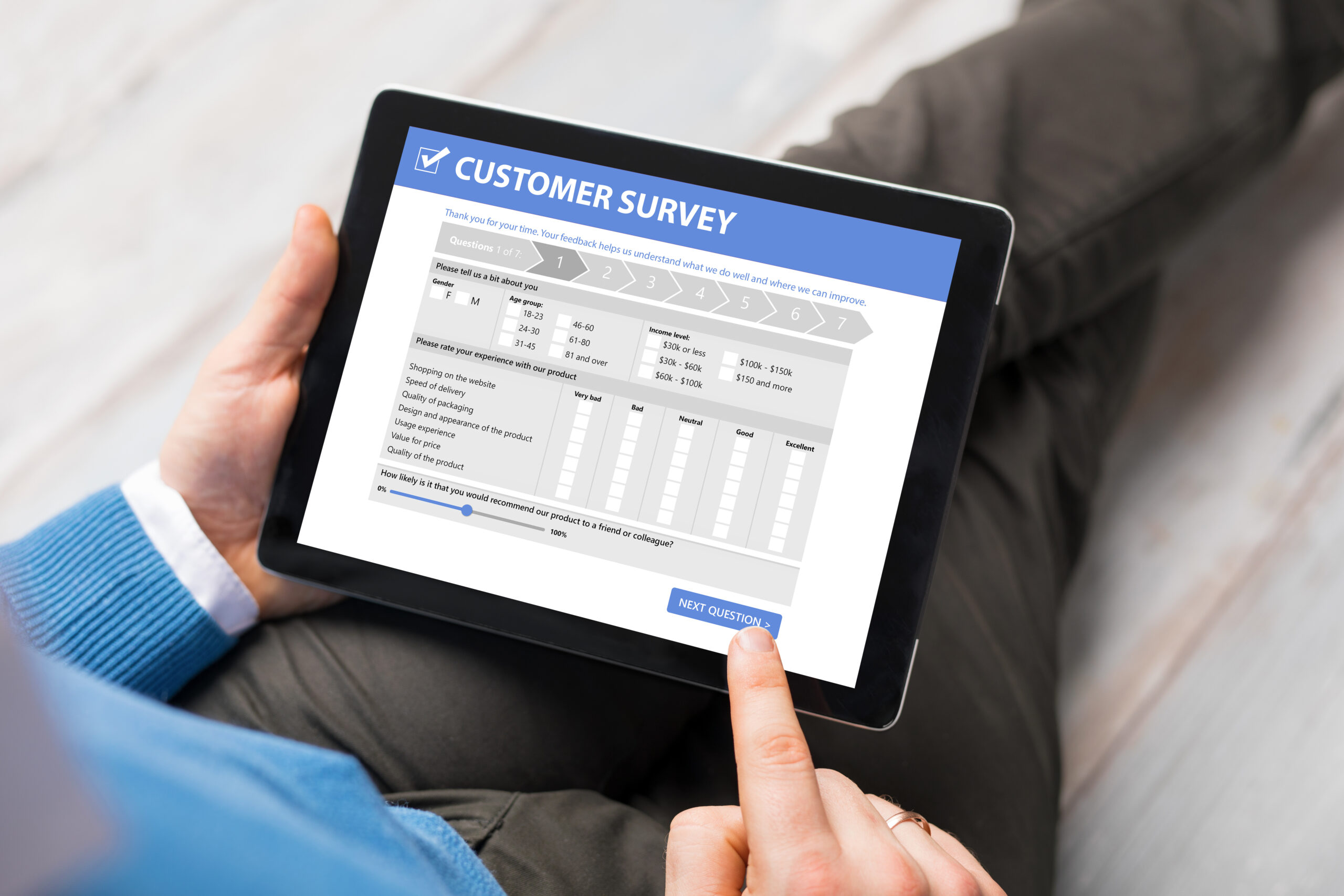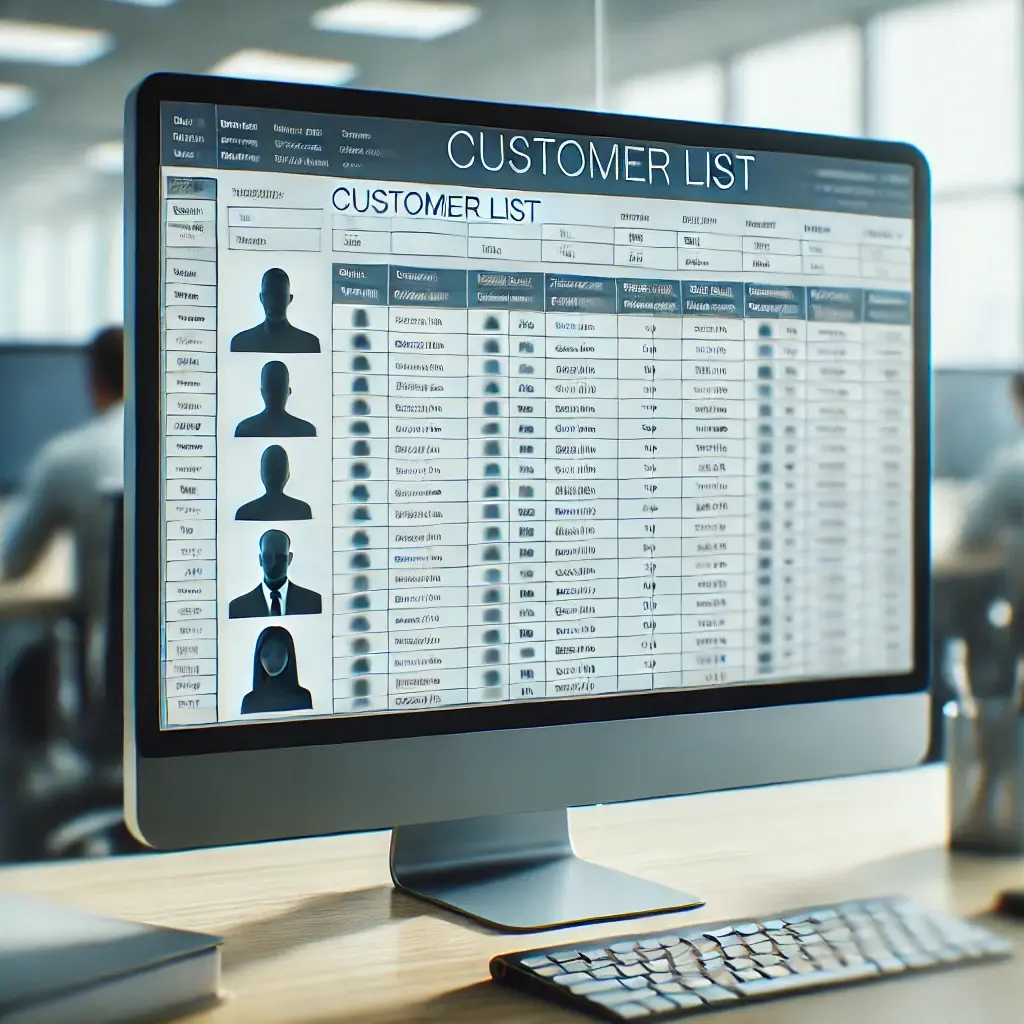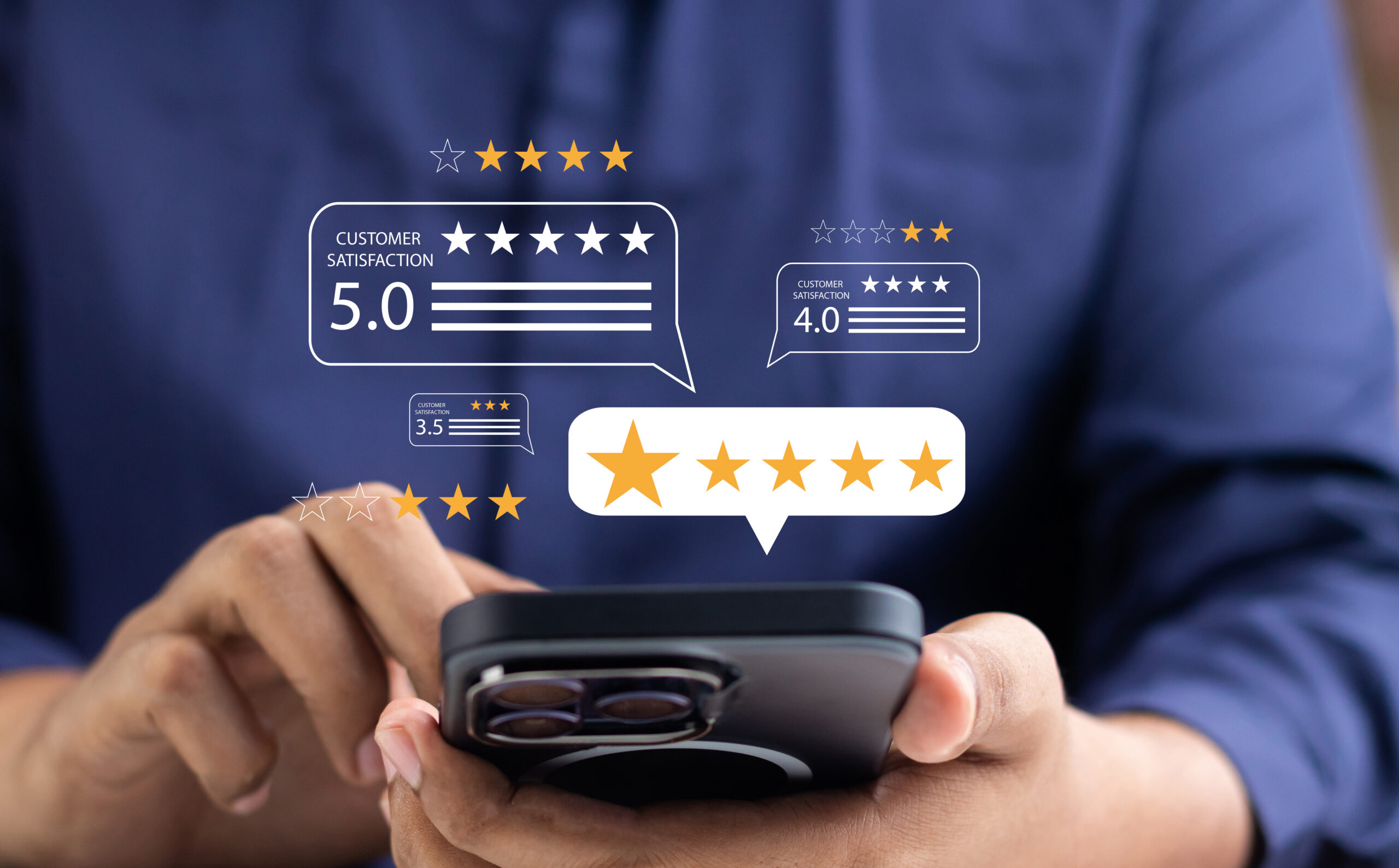Customer Survey Best Practices: Unlocking Insights Through Your Customer List
Learn how to leverage customer lists for market research. Explore best practices, address low response rates, and drive actionable insights.
Date: February 11, 2025
Inside this Article…
- Introduction
- Conducting Surveys with Customer Lists: Expectations vs. Reality
- The Advantages of Customer Surveys
- Downsides to Doing Customer Surveys with Customer Lists
- Why You’re Getting Low Response Rates in Customer Surveys
- Customer Survey Best Practices: How to Improve Response Rates
- Customer Survey FAQs
- Key Takeaways
Why AI Tools Built by Researchers Make a Difference
Learn more about AI-powered market research tools and why tools build by researchers for researchers are leading the charge. By: Erik Larson Date:...
Navigating the Survey Software Maze: A Guide to Making the Right Choice for Marketing Research
There are a number of survey software options to choose from. Learn how to make the right choice for your marketing research. Inside this...
Introduction
At OvationMR, most of the surveys we conduct are with respondents curated and vetted through our platform. We often get requests from clients to also include their customer lists in their studies, as they want to compare results with random sample data.
Customer surveys have long been a cornerstone of effective quantitative market research, offering businesses direct insights into the thoughts, experiences, preferences, and behaviors of their target audience. When effectively designed and executed, customer surveys promise a quick and efficient way to engage with individuals who already have an existing relationship with your brand.

In the early days of my research career, conducting research with customer or client lists was great. . Engagement was high and we had data from known entities. In our experience over the last few years, this is not the case. Response rates and overall engagement have fallen dramatically. This is especially true with B2B audiences.
How can businesses maximize the potential of this quantitative approach while avoiding common pitfalls? In this post, we will explore the use of customer lists for survey research. Note that many of the points made below will apply to other internal lists you may have, such as product users and affiliated contacts such as sales prospects and newsletter recipients.
Conducting Surveys with Customer Lists: Expectations vs. Reality
The promise of customer surveys lies in their ability to leverage an already-defined audience to extract highly relevant insights. Businesses expect that by tapping into their customer list, they can:
- Gain actionable feedback from people familiar with their brand and products/services.
- See higher response rates compared to reaching out to a general audience.
- Save time and resources due to the targeted nature of the list.
However, expectations almost always conflict with actual results. While these surveys can be highly effective, they also require serious planning to address the challenges of low response rates and bias.These are realities that many companies are facing today.
The Advantages of Customer Surveys
Conducting surveys with customer lists can offer the following benefits:
- Targeted Audience: Customer lists ensure you are reaching people already familiar with your products or services.
- Cost-Effectiveness: Engaging with an existing database is often more economical than purchasing third-party lists or recruiting a new sample.
- Potential for Higher Response Rates: Customers are, or should be, more likely to participate in surveys from a trusted brand.
- Rich Segmentation Opportunities: Customer lists can include valuable data such as purchase history, demographics, interaction data, etc., enabling tailored analysis and customization of the survey itself.
- Enhanced Relationship Building: Surveys can reinforce your connection with customers by showing that you value their opinions.

Downsides to Doing Customer Surveys with Customer Lists
All is not roses, however. Improperly executed research or poor lists can lead to deleterious results:
- Bias Risk: Responses may not represent the broader market if your customer list skews toward specific demographics or behaviors, or if those responding do not reflect the broad distribution of customers across the desired dimensions. Research suggests that positive or negative skews occur in customer research and efforts to mitigate this outcome are critical.
- Overuse of Contacts: Frequent surveys can lead to fatigue, lowering response rates over time.
- Data Quality Issues: Outdated or incomplete customer information can hinder survey success.
- Lower-than-Expected Response Rates: Despite the familiarity factor, customers may still ignore the survey, and are increasing doing so, as stated above.
Why You’re Getting Low Response Rates in Customer Surveys
Today, achieving high response rates for customer surveys has become increasingly challenging. Factors like survey fatigue, competing priorities, and irrelevant survey content often result in response rates as low as 1 to 2%.
Reasons for low response rates include:
- Lack of Genuine Engagement With Customers: This is the number one issue we see. A company that does not regularly engage with its customers, or for whom the relationship is mostly a transactional one should not be surprised that customers are not interested when they see a survey invitation from one of their suppliers. I once worked for a company that had a rather rabid fan base. Its customers ordered swag and gladly showed it off on social media. The company routinely engaged them with fun email marketing campaigns. It was easy to get over 50% response rate on the first invite. Without regular engagement, getting survey responses is quite difficult.
- Survey Fatigue: People are overwhelmed with survey requests from multiple sources.
- Lack of Incentives: Without tangible rewards, participants may not see the value in responding.
- Timing Issues: Poorly timed surveys are more likely to be ignored.
- Length and Complexity: Long or overly complex surveys may encourage drop-offs or discourage initial clicks on the invitation (i.e., “This is a 30-minute survey”).
- Email Fatigue: Email inboxes are often quite full, and it is difficult to compete with more pressing needs.

Customer Survey Best Practices: How to Improve Response Rates
There are specific actions that can be taken to improve the chance of a higher response from customers:
1. Clean the List
- Remove duplicate or outdated contacts: If a customer has last interacted over 15 years ago, he or she probably needs to be removed. Keeping your list clean as a matter of course is best. An unkempt list indicates more serious business issues at hand.
- Identify those on the lists who are not decision-makers or purchasing influencers: We routinely see lists with the names and email addresses of accounts payable clerks or receptionists who would not be appropriate respondents for surveys. Remove these people.
- Segment the list: Use all available data to create segments in your list, including class of customer, company size, sales history, customer touchpoints, respondent demographics, and more. By creating segments, the survey can be tailored to the audience and the wording in the invitations can be customized as well. Additionally. This information provides much potential in the analysis phase of your study.
2. Craft a Compelling and Effective Invitation
- Use personalized subject lines and greetings.
- Clearly explain the purpose and value of the survey, and why their voice is so important! They are the star of the show, not the survey or your needs.
- Specify the time commitment (e.g., “This survey will take 5 minutes”).
- Make sure to communicate the incentives provided.
- Reiterate the importance of their feedback by explaining how it will be used to improve products and services. Give examples of previous action taken based on feedback.
- Promise to provide a summary of results after the survey is completed.
- Thank the respondents in advance.
- Note that survey invitations should be sent via the platforms and channels being used by your customers. text messages, Slack, etc., should be utilized.
3. Incentivize Participation
- Provide an incentive: The days of people doing surveys just because you asked them are long gone. Most people do not participate in customer surveys for the incentive. They do so as part of the customer engagement experience. And incentives are a way of saying “We appreciate your input and the time you spent.”
- Align incentives with the interests of your audience: This is important. You would not provide an item oriented to TikTok teens to a 40-something audience, for example. Think about who it is you are engaging with.
- Don’t be cheap: Offering a $.50 coupon at a doughnut chain is not much of a statement of appreciation. On the other hand, over-paying is a waste of resources. Determining the right value of incentives is an art and something that needs to be learned for each audience.
4. Promote the Survey
- Announce it: Across multiple channels (e.g., email, social media) before the survey is launched. This should be an entire omnichannel campaign designed to drive interest and engagement.
- Increase importance and relevance: The announcements need to come from someone who matters to the respondents. This may be the company president, or can be customized to come from the customer’s sales rep. “From the marketing department” does not carry the same weight.
- Promote the survey during the data collection period: Just like advertising, it will take multiple announcements to get people to pay attention.
- Issue reminders: Track survey responses and send regular, periodic reminders to those who have not yet participated. It may take multiple attempts to get traction. Customize each reminder to create a sense of urgency. Incentives can be increased as well over time.
5. Optimize Survey Design
- Keep surveys short and focused to increase relevance and reduce drop-offs.
- Use professional survey tools.
- Ensure mobile compatibility. Make it easy for respondents to complete surveys.
- Use an engaging and easy-to-understand writing style.
- Consider breaking into smaller chunks through split samples or multiple shorter surveys to reach your learning objectives.
- Prioritize learning and business objectives and focus on the most important issues at hand.
6. Thank the Respondents
- Send thank you emails to the entire database, whether they responded or not. This communicates that you are indeed listening.
- Send a summary of results. People want to be included.
Customer Survey FAQs
What is a good response rate for customer surveys?
Response rates vary. Each organization needs to develop a benchmark and work to improve it over time.
How do I clean my customer list for surveys?
Remove duplicates, update contact details, and segment the list based on relevant criteria.
What are the best incentives for survey participation?
Gift cards, discounts, and entries into prize draws are often highly effective. Most importantly, tailor the incentive to your audience.
Key Takeaways
Customer surveys conducted through customer lists can deliver powerful insights, but they require careful planning and execution. Here are the key takeaways:
- Leverage the Familiarity Advantage: Customers who know your brand are more likely to engage, but you need to nurture that relationship.
- Prepare Your List: A clean, segmented, and up-to-date list is the foundation of a successful survey.
- Be Realistic About Response Rates: Set expectations around typical participation levels and plan accordingly.
- Invest in Engagement: From crafting compelling invitations to offering meaningful incentives, focus on making the survey process worthwhile for participants.
- Learn and Adapt: Use each survey as an opportunity to refine your approach, improving design, timing, and promotion strategies over time.
For businesses considering customer surveys, success depends not just on leveraging your customer list, but on engaging your audience in a thoughtful and meaningful way. By addressing common challenges and focusing on best practices, you can unlock the full potential of customer surveys to drive informed decision-making. Finally, a professional marketing research and insights provider can help you get the most from your customer surveys. Let OvationMR help you design and execute your customer surveys for actionable insights and measurable results.

Let's Work on Your Next Market Research Project

Bart Borkosky
Author
Bart is Chief Research Officer at OvationMR and is responsible for online panel and Online Sample Data Quality. He also consults with clients on sampling design for various types of online research campaigns. Bart can be reached at Bart.Borkosky@ovationmr.com
OvationMR is a global provider of first-party data for those seeking solutions that require information for informed business decisions.
OvationMR is a leader in delivering insights and reliable results across a variety of industry sectors around the globe consistently for market research professionals and management consultants.


